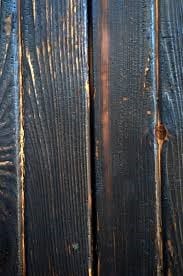It is no surprise that we often leave bits and sheets of paper spattered all across our wooden furniture. Working people with school kids can easily understand the extent to which the mess can reach. Some time out of your tight schedules, and you can show the paper their right place and clean the critter.
But do you know what creates serious nuisances to your wooden furniture? When the same paper gets damped with water and is left out to dry for some time. To keep it vivid, imagine using a tissue or paper as a coaster for a hot pan. No matter how hard you try to scratch away every bit of paper, you’re still going to be left with unsightly paper leftovers.
Very much like the hot pan, the wooden furniture suffers too. Fortunately, there are ample ways to do away with the paper wrappers without even damaging the wood finish a dime. So, let us now look at a compilation of four steps that you can resort to restore the wooden furniture to its original look. Also, these steps are super easy and a fun-to-do on how to remove paper from wood.
Step-by-step guide on how to remove paper from wood
Step 1: How to remove paper from wood using olive oil
You all must be well aware of the incredible uses that olive oil has got in the kitchen and for healthcare purposes. But do you know the amazing use that olive oil can have for your furniture? Follow these quick steps to remove paper from wood employing olive oil.
- Soak a towel in a bowl of olive oil.
- Let it soak for a while until the towel is perfectly saturated.
- Now, cover the tainted area with the same towel and leave it for some time.
- After taking the towel off, scrub the area gently with a knife.
- Make sure that you do not scratch it harshly or you might end up harming the wood varnish.
- Now wipe the area using a clean cloth and you can already find the area clear now.
- Repeat the process in case of some leftovers.
Step 2: How to remove paper from wood using heat
Heat is the most effective and efficient tool to discard paper from wood. To begin with, use a blower or a heat gun on the lowest setting, followed by the below-mentioned steps afterwards.
- From a distance, heat the entire paper-stuck surface once for a couple of minutes.
- Point it towards the corner. While dealing with heat, make sure that the least distance between the heat gun and wood is 3 inches (7 to 8 cm). In the case of a blow-dryer, it is expected to be 5 cm.
- Keeping in view the ideal distance, direct heat for not more than 15 to 20 seconds.
- Now that the wooden surface is heated enough, slide a flat and pointed object right into the glued paper.
- Make gentle efforts to do away with as much paper as you can.
- Now that you have unglued the corners of the unsightly paper, use tweezers to pull off the entire paper.
- Try not to rip the paper from between, else you might have to begin again from step one. Besides, if the wood is fragile, the top layer might be harmed too.
Step 3: How to remove paper from wood using solvents
Solvents like vinegar or paint thinner (mineral spirit) can be used to wipe almost every type of wooden surface clean. While paint thinner might lead to a slight weakening of the wood, vinegar, on the other hand, does not pose any such threat to the wooden furniture. But it’s important to be cautious while handling solvent. Read the label instructions before using them.
Consider the following steps to repudiate the ugly paper marks using vinegar.
- Soak a paper towel in white vinegar.
- Let it sit on the paper patch for a minimum of five minutes.
- Now using tweezers, pull the paper off the wood furniture.
- Make sure that the wood does not stay moist for long or else the grain might soak it in and end up causing damage.
- If the cloth does not make much difference to the mark, go with an adhesive cleaner or any cleaning product that comprises citrus oil.
- It is even easier to remove the paper from wood using an adhesive cleaner, just apply it over the surface and let it sit for 5 to 10 mins.
- Adhesive cleaners dry faster when smeared with petroleum jelly. Hence, cover the cleaner applied area with a vaporizing rub.
- Leave the area for 8 to 10 hours.
- Now, you can easily see the difference. It’s very easy to peel off the unneeded paper from the wood.
Step 4: How to remove the paper from wood using mayonnaise
Yes! You read that right. Mayonnaise can also be used to remove the paper from wood. This whipped mixture of vinegar, citric acid, egg, and spices makes a strong solvent. It has the potential to break down even the fibres of the paper and hence, wipe it away. Let us go ahead with the steps to be followed for removing paper using mayonnaise.
- Roll some dollops of mayonnaise into a paper towel.
- Rub it against the paper mark.
- Let the cream sit there for a while before cleaning it off.
- After the mayonnaise has dried a little, smear the patch with olive or any household oil.
- Now remove all the layers using a clean cloth.
If the patch is fresh, then mayonnaise is certainly one of the best solutions.
Conclusion
Also, if the knife does not work well then even sandpaper can be used to serve the purpose. But that option is available only in the case of unvarnished wooden tops. If your wooden furniture is unvarnished then sandpaper can be the cause of damage, on the contrary. Concludingly, it is very easy to remove the paper from wood. All you need to do is to make sure that you’re using the right conduit and following the right steps.








